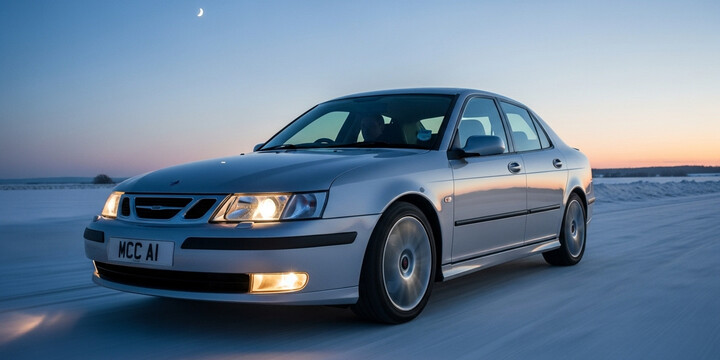
SAAB 9-3 (1998-03) 5DR HATCHBACK 2.2 TID
The SAAB 9-3 (1998-03) 5DR HATCHBACK 2.2 TID is a stylish, practical hatchback that stands out in the used car market for those seeking a reliable, family-friendly vehicle with a touch of Swedish design flair. Offering a comfortable and versatile 5-door layout, this model is well-suited for everyday errands, commuting, and small family journeys. Known for its durability and distinctive Scandinavian styling, the SAAB 9-3 2.2 TID blends functionality with a smooth driving experience, making it a popular choice among first-time drivers, students, and small families alike.
Compared to its rivals, the SAAB 9-3 is praised for its solid build quality, unique design, and reputation for reliability. With an average recorded mileage of around 148,900 miles and a typical ownership history of about seven previous owners, it reflects a vehicle that has seen regular use but remains a practical choice for cost-conscious buyers. Its fuel economy and manageable running costs make the 2.2 TID engine a practical option for everyday driving. For anyone considering a well-rounded, distinctive hatchback in the used car market, the SAAB 9-3 (1998-03) 5DR HATCHBACK 2.2 TID offers notable qualities and a dependable driving experience.

average use

The latest recorded mileages for the SAAB 9-3 (1998-03) 5DR hatchback 2.2 TID indicate that approximately two-thirds of the vehicles have covered between 110,000 and 120,000 miles, suggesting this is a common mileage range for this model. Conversely, about one-third of these cars have significantly higher mileage, between 330,000 and 340,000 miles, highlighting that some vehicles in this group are well-used and have accumulated high mileage over time. This distribution suggests a wide range of vehicle usage and age within the sample, with the majority being moderate-mileage cars.

vehicle values

The available data indicates that for the Saab 9-3 (1998-2003) 5-door hatchback 2.2 TID model, private sale prices are concentrated in the range of £0 to £1,000, accounting for 100% of the observed valuations. This suggests that all private sales within the dataset are valued at or below £1,000, highlighting that these vehicles are generally considered low-value or perhaps require significant repairs. It may also reflect the age and condition of these cars, leading to predominantly low private sale prices.

production years

The data indicates that the majority of the SAAB 9-3 (1998-03) 5DR Hatchback 2.2 TID vehicles from this sample were manufactured in 2001, accounting for approximately two-thirds (66.7%) of the vehicles. The remaining third (33.3%) were produced in 2002. There are no vehicles listed from other years within this range, suggesting that 2001 and 2002 are the predominant manufacturing years for this model.

colour popularity

The data indicates that for the SAAB 9-3 (1998-03) 5DR Hatchback 2.2 TID model, the main paint colours are evenly distributed among grey, blue, and black, each accounting for approximately 33.3%. This balanced spread suggests that none of these colours dominates in popularity for this vehicle model, reflecting a diverse preference among owners for these classic, neutral shades.

ownership cycle

The data indicates that for the 'SAAB 9-3 (1998-03) 5DR HATCHBACK 2.2 TID,' there are three distinct numbers of registered keepers among the sample: 3, 7, and 10. Notably, each of these counts represents an equal one-third (33.3%) share of the vehicles in the sample. This suggests a relatively uniform distribution in the number of owners, with no single ownership duration or pattern overwhelmingly dominating. Such a distribution may imply that a significant portion of these vehicles change hands relatively frequently or are maintained across a diverse range of ownership lengths.

engine choices

The data indicates that all SAAB 9-3 (1998-03) 5DR Hatchback 2.2 TID models in the sample are equipped with a 2171 cc engine capacity and run exclusively on diesel fuel. This suggests a consistent specification across the vehicle type, with no variations in engine size or fuel type observed within the dataset.












